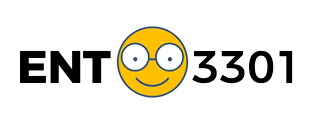OBJECTIVE
An essential goal of this course is to help you learn how to identify new business opportunities (a process known as ideation). We will go over several creativity exercises, study the most common ways to come up with new business ideas, and I will provide you with several examples (and guides) on how to do market research so that you can identify market trends and come up with new ideas.
Most students believe that the first step in your journey is ideation -- the process of generating new ideas to solve specific problems. However, innovation does not start with ideation. Rather, you should start ideating only once you've identified a problem that's worth solving. In other words, coming up with a new business idea (and a value proposition) is pointless if you don't understand what kind of frustrations customers are facing.
“If I had an hour to solve a problem I'd spend 55 minutes thinking about the problem and five minutes thinking about solutions.” - Albert Einstein
In fact, most successful entrepreneurs come up with new business ideas by drawing on their past work experiences, often starting businesses in the industry they've worked for over a decade. In other words, most successful entrepreneurs not only acquire skills, connections, knowledge, and resources while working in a specific industry, but, even more importantly, this experience gives them a much better understanding of the frustrations and problems customers are facing.
Obviously, this is not feasible for most college students. More often than not, you will be highly unfamiliar with the customers and market needs, you will have little sense of the likely outcomes, you have not seen this type of problem before, you don't know where to start (and what hypotheses to test), and your usual data and analytics may not help you find a solution (what we refer to as a "big unknown"). In other words, before you get to the ideation stage, you first need to discover insight into a real problem, define an area to focus upon, and only then develop a potential solution.
Thankfully, there are many ways to help you identify a specific problem that, in turn, can help you come up with a promising business idea. You can study your own needs and frustrations, you can listen to the frustrations of those around you (potential future customers), you can draw inspiration from other great start-ups, or you can make existing products accessible to others. And, while you can never be certain how customers will react to your ideas, you can certainly invest time to make sure that your ideas are solving a real problem, which can maximize your chances of success later.
SUMMARY OF ASSIGNMENT
The goal of this assignment is two-fold: first, to help you identify a problem that is worth solving (via your trends analysis), and second, to develop a potential solution for this problem (you business idea) using ideation.
You will have to write a 8-12 page research report (Times New Roman, 12pts, 1.5” spacing, 1” margins) highlighting several promising trends that are fueling a specific industry, explaining the market dynamics in this industry (size, growth, key incumbents, etc.), the major pain points for consumers, and, finally, identifying several promising business opportunities in that space. Your report should culminate by highlighting a single business idea that you will pursue for the rest of the semester. You can include graphs as supporting evidence (e.g., google trends, etc.), but they should be attached in an appendix at the end of your report.
You can use the following template to help you identify a problem you are passionate about [download template].
Below, I briefly summarize the objectives for each section of your report.
Underlying Trends
You should start your research report by highlighting several emerging trends in a specific space (market or industry). Specifically, you will need to explain: (1) what are the key points emerging from studying this particular market? (2) what does the market look like now and how is it changing? (3) What problems need to be solved?
Market Dynamics
This section should include two sub-sections.
2A. Market Sizing. How big is the market? How quickly is the market growing?
2B. Key Incumbents. What are the main players in this industry? What are businesses currently offering? Is this the best approach or the only one they know?
Pain Points
In this section, you will need to explain what are the current problems, frustrations, or "pain points" that current (or future) customers are facing? Try to identify specific problems. For example, instead of saying “people are getting older”, you can more specifically discuss the impact of the aging process on different aspects of people's lives, from new financial needs to accessibility.
You can also identify pain points by reading online reviews and articles (what are people frustrated with or would like to see in an offering), immerse yourself in the experience of others (to uncover potential pains), observe what people do (from a distance) to gain insights about customer behavior, and simply engaging in conversation asking why (in order to identify the root cause of their problem), etc. The most important skill here is to learn to listen [watch here], also known as customer empathy. Often, you can learn far more by talking to a customer for a few minutes than by doing months of market research (this will also help you identify the context of the problem).
Opportunities
In this section, you will highlight several potential business opportunities. You can do this in many different ways.
First, try to identify how competitive your space is. How many companies have received funding? Does it seem like VC's are interested in this space?
Next, examine some of the most interesting companies in this space -- what can you learn from their unique value proposition? Can you identify any common trends?
Look up key players and related keywords in Google Trends. Do you see any trends emerging over time?
Try to think of ways in which you can make a product more inclusive (e.g., to disadvantaged groups). For example, Disney developed "Feeling Fireworks" that allows visually impaired people to have a tactile experience. How can you make the content more fun, relatable, or simple (so that a child can use it and enjoy it)? [you can use the following brainstorming template from the Board of Innovation]
You can research whether there has been any recent changes in the law that you can capitalize on (e.g., expiring patents).
Are there any niche products/services that hinge on a larger trend? For example, offering probiotics for dogs hinges on the trend of people investing in healthy food for their pets.
Is there opportunity to take an antiquated industry and simply bring it online or disrupt through a new business model like a subscription box?
OTHER TOOLS YOU CAN USE (many of those are paid services so I DO NOT expect you to use them for this project). However, it's important to be aware of some of these best-in-class tools available to help you research business opportunities in the future.
SEO tools: Ahrefs and Keywords Everywhere
Traffic estimation: SimilarWeb
Trend forecasting: Google Trends
Market research: GetLatka and Starter Story
YOUR BUSINESS OPPORTUNITY
Finally, your report should end by identifying a single business opportunity (based on your trends analysis so far) and discussing the following points:
1. IDEA: What is it? How does it work? Can you communicate your value proposition in a few effective sentences? How would you communicate it in a tweet? Can you explain it in 1 minute? In once sentence, why does your idea matter?
2. CUSTOMER: Who is it for? What is the initial market and its size?
3. NEED/PROBLEM: Why do customers need it? The problem or opportunity fit is clearly stated and understood. Is the problem worth solving? Try to be specific. Instead of saying "companies have a hard time finding talent," use specific statements such as "On average, companies spend 20 hours to find a good fit for a position. Taking into account the salary of $20/hour, and the fact that company X hires 500 people a year, we spend over $200K on acquiring new talent."
4. DIFFERENTIATION: What makes it unique & different? What are the existing alternatives/ competition?
If you did a good job with your analysis (above), this part of your research report should be relatively straightforward and will logically follow from the analysis you have done so far.
The idea is to spend the rest of the semester developing your business idea, which will culminate in a business pitch at the end of the semester.
Don't be afraid to start small. Contrary to popular belief, most visionary entrepreneurs and companies started their journey by thinking "small," not big [read here]. Even Facebook, which has billions of subscribers, started by only targeting college students (in a particular university). In other words, try to identify a clear customer segment that you want to target, so that you can stay focused. For example, instead of focusing on "everyone that has a car," focus on "people who have a car but drive it only during the weekend."
To help you prepare for this part of the project, we will cover the most common sources of inspiration for finding potential business ideas and developing a vision. We will also review the essential components of what makes a business idea worthy of pursuing. You can also use the following guide that outlines some creativity/brainstorming exercises [download here].
FINAL NOTE
Entrepreneurship is inherently uncertain and predicting how customers will react to your product (the ultimate determinant of your success) is impossible without trial-and-error. This is clear if you consider how often experts in the field (including VC investors with decades of experience) get their predictions wrong.
What this implies is that there is no substitute to learning-by-doing, and often where you start in your entrepreneurial journey is not where you are going to end. Rather, you will keep evolving and changing your offering to fit the needs and demands of a growing and changing market, and, more importantly, as you update your own understanding and beliefs about your customer base.

